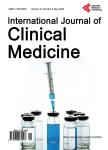Review on Hydroxyurea Usage in Young Children with Sickle Cell Disease: Examining Hemoglobin Induction, Potential Benefits, Responses, Safety, and Effectiveness
Review on Hydroxyurea Usage in Young Children with Sickle Cell Disease: Examining Hemoglobin Induction, Potential Benefits, Responses, Safety, and Effectiveness作者机构:Department of Pediatrics Zhongnan Hospital of Wuhan University Wuhan China
出 版 物:《International Journal of Clinical Medicine》 (临床医学国际期刊(英文))
年 卷 期:2024年第15卷第1期
页 面:1-18页
学科分类:1002[医学-临床医学] 100214[医学-肿瘤学] 10[医学]
主 题:Effectiveness Hydroxyurea Sickle Cell Disease Sickle Cell Anemia Minimally Effective Dose Maximum Tolerated Dose
摘 要:Sickle cell disease (SCD) is a prevalent condition, particularly in the countries of sub-Saharan Africa, where the presence of specific genes associated with Malaria contributes to its high prevalence. Patients with sickle cell disease frequently experience painful episodes necessitating hospitalization, and their hemoglobin levels are typically lower than those of the general population. There are different treatment options available to manage complications, such as transfusing blood, hydroxyurea, and strong anti-pains. However, with all these treatments, patients still commonly experience pain crises and suffer from organ damage. Hydroxyurea, the sole approved medication for sickle cell anemia in developed and developing countries, is widely used in children despite being primarily indicated for adults. Multiple studies have demonstrated the efficacy of hydroxyurea in inducing HbF production in young children with SCD. Elevated HbF levels have been associated with improved clinical outcomes, including a reduction in vaso-occlusive crises, acute chest syndrome, and the need for blood transfusions. Furthermore, increased HbF levels have been shown to ameliorate disease-related organ damage, such as pulmonary hypertension and sickle cell retinopathy. The response to hydroxyurea treatment in young children with SCD is variable. Some patients achieve substantial increases in HbF levels and experience significant clinical benefits, while others may have a more modest response. Factors influencing the response include baseline HbF levels, genetic modifiers, treatment adherence, and dose optimization. Safety is a crucial consideration when using hydroxyurea in young children. Studies have shown that hydroxyurea is generally well-tolerated, with the most common adverse effects being myelosuppression, gastrointestinal symptoms, and dermatological manifestations. However,long-term effects and potential risks, such as renal dysfunction and reproductive impacts, require furth



